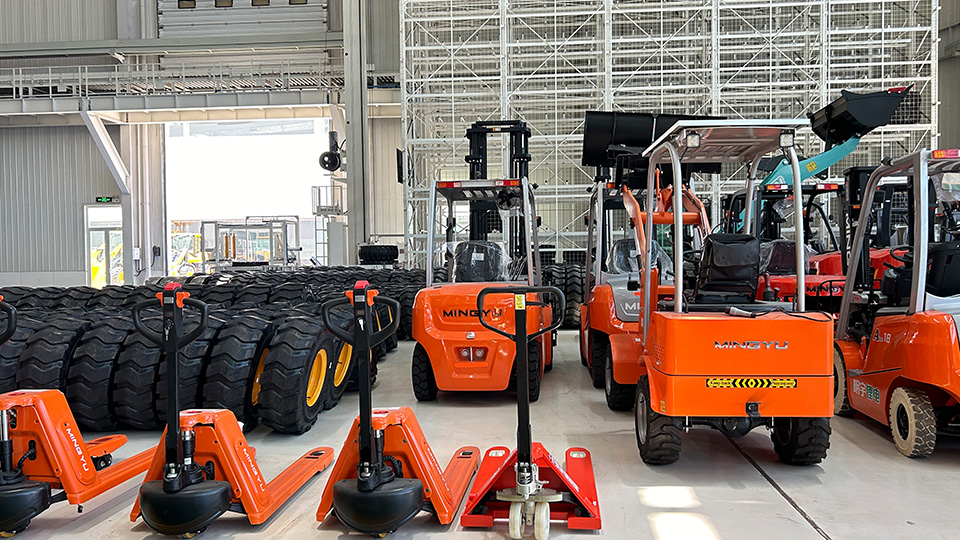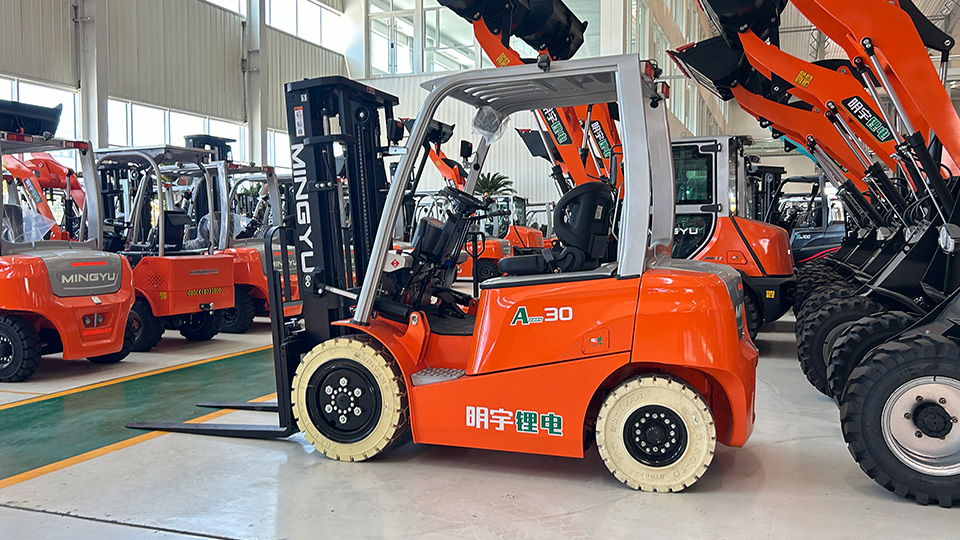
How Long Does a Forklift Test Take? A Comprehensive Examination of Assessment Durations
Operating a forklift is a critical skill in countless industries, from logistics and manufacturing to retail and construction. The ability to safely and efficiently move heavy loads is paramount for productivity and, more importantly, for preventing accidents and injuries. To ensure operators possess the necessary competencies, comprehensive training culminating in a rigorous test is mandated by regulatory bodies worldwide, such as the Occupational Safety and Health Administration (OSHA) in the United States, the Health and Safety Executive (HSE) in the UK, and WorkSafeBC in Canada.
A common question among individuals pursuing forklift certification, or employers seeking to train their workforce, is: "How long does a forklift test take?" This seemingly straightforward inquiry reveals a complex interplay of factors, including the type of test, the operator's experience level, the specific forklift being assessed, and the testing environment. This comprehensive technical article will dissect the various components of a forklift test, explore the typical durations for different assessment scenarios, and highlight the critical elements that contribute to the overall time required for a thorough and compliant evaluation.
Understanding the Components of a Forklift Test
Before delving into specific durations, it's essential to recognize that a forklift "test" is rarely a single, monolithic event. Instead, it's typically a multi-faceted assessment designed to evaluate both theoretical knowledge and practical operating proficiency. Regulatory standards universally require both components.

Written/Oral Knowledge Test (Theoretical Assessment):
This part of the test evaluates the operator's understanding of forklift safety principles, operational procedures, and relevant regulations. It typically covers topics discussed during the classroom portion of the training, including:
Forklift stability principles (e.g., load center, stability triangle, rated capacity).
Pre-operational inspection procedures (daily checks, identifying defects).
Safe operating practices (e.g., speed limits, pedestrian awareness, horn usage, parking procedures).
Understanding data plates, warning labels, and operator manuals.
Battery charging/refueling procedures and associated hazards.
Load handling techniques (e.g., proper stacking, lifting, lowering).
Workplace hazards (e.g., ramps, uneven surfaces, blind spots, overhead clearances).
Emergency procedures (e.g., tip-overs, loss of control).
Regulatory requirements specific to the region (e.g., OSHA 29 CFR 1910.178).
Practical Operating Test (Performance Assessment):
This hands-on component is where the operator demonstrates their ability to safely and competently operate the forklift in a simulated or actual work environment. Under the direct observation of a qualified evaluator, the operator is assessed on their ability to:
Perform a thorough pre-operational inspection.
Mount and dismount the forklift safely.
Start and stop the forklift smoothly.
Maneuver the forklift forwards and backwards, maintaining control.
Navigate various obstacles (e.g., cones, turns, narrow aisles).
Pick up, transport, and deposit loads accurately and safely.
Stack and de-stack materials to appropriate heights.
Operate on ramps or inclines (if applicable to the work environment).
Demonstrate awareness of pedestrians and other traffic.
Park the forklift correctly and shut it down safely.
Exhibit proper use of controls and attachments.
React appropriately to simulated hazards or unexpected situations.
Typical Durations for Forklift Tests
The time it takes to complete a forklift test varies significantly based on whether it's an initial certification for a novice, a refresher test for an experienced operator, or a specialized assessment for a particular type of equipment.
1. Initial Certification Test (for Novice Operators):
This is the most comprehensive assessment, designed for individuals with little to no prior operating experience. It follows a full training program.
Written/Oral Test Duration: 30 minutes to 1.5 hours.
This component typically consists of multiple-choice questions, true/false statements, or short-answer questions. The exact time depends on the number of questions and the complexity of the material. Some evaluators may conduct an oral examination, which can vary in length based on the depth of questioning and the trainee's responses.

Practical Operating Test Duration: 1 to 2 hours per individual.
This is the more time-consuming part, as it requires the operator to demonstrate a full range of skills. The evaluator observes the operator performing various tasks, often including a pre-use inspection, navigating a specific course with obstacles, picking up and setting down loads at different heights, and demonstrating safe parking procedures. The duration per person accounts for the actual operating time, evaluator instructions, and feedback.
Total Test Time for Initial Certification (per individual): Approximately 1.5 to 3.5 hours.
It's important to note that if multiple trainees are being assessed sequentially, the overall testing session for a group will naturally be longer. However, the time dedicated to evaluating a single individual's competency generally falls within this range.
2. Refresher/Recertification Test (for Experienced Operators):
This assessment is for operators who are re-certifying or have been identified for retraining due to an incident or observed unsafe behavior. It assumes a baseline of existing knowledge and practical skills.
Written/Oral Test Duration: 15 minutes to 1 hour.
Refresher tests often focus on key safety principles, regulatory updates, and common errors. They might be shorter and more targeted than initial tests.
Practical Operating Test Duration: 30 minutes to 1 hour per individual.
The practical assessment for experienced operators focuses on reinforcing good habits and identifying/correcting any deficiencies that may have developed over time. It may involve a slightly less extensive course than the initial test but still requires demonstration of core competencies.
Total Test Time for Refresher Certification (per individual): Approximately 45 minutes to 2 hours.
3. Specific Equipment/Attachment Test:
When an operator is being certified on a new type of forklift (e.g., transitioning from a counterbalanced truck to a reach truck) or on the use of new attachments, a focused test is required.
Test Duration: 45 minutes to 2 hours per individual.
The duration depends heavily on the complexity of the new equipment or attachment. For instance, testing on a simple side-shifter might be quicker than testing on a complex rotating clamp or a telehandler. This test would typically include both a brief theoretical review of the specific equipment/attachment and a practical demonstration of its safe operation.
Factors Influencing Test Duration
Several critical factors can significantly impact how long a forklift test takes:
Trainee's Proficiency and Confidence:
Highly Proficient Operators: Individuals who are well-prepared, confident, and execute tasks smoothly will complete the practical test more quickly. Their movements will be fluid, and they will make fewer errors requiring correction or re-attempts.
Less Proficient Operators: Trainees who are hesitant, make frequent mistakes, or require repeated instructions will naturally take longer. The evaluator may need to provide additional coaching or require certain maneuvers to be repeated until satisfactory performance is achieved. This is particularly true for practical assessments.
Complexity of the Test Course/Tasks:
A test course with more intricate maneuvers, tighter spaces, varied load types, or challenging scenarios (e.g., ramps, blind intersections) will inherently take longer to complete than a simpler course.
The inclusion of specific workplace simulations (e.g., loading/unloading a trailer, stacking in a live warehouse environment) will extend the duration.
Type of Forklift Being Tested:
Operating a basic counterbalanced forklift is generally less complex than operating a narrow-aisle reach truck, an order picker at height, or a telehandler on uneven terrain. Tests for more specialized or complex equipment will require more time to assess the operator's mastery of its unique controls and operating characteristics.
Number of Forklift Classes Being Certified:
If an operator is being tested on multiple classes of forklifts (e.g., sit-down counterbalanced, stand-up counterbalanced, and a powered industrial truck), the test duration will be cumulative, as each class requires a separate practical demonstration of competency.
Evaluator's Style and Requirements:
Some evaluators may be more meticulous or require a higher number of repetitions for certain maneuvers. Others might have a more streamlined approach.
The clarity of instructions and feedback provided by the evaluator can also influence the trainee's performance and thus the test duration.
Testing Environment Conditions:
Dedicated Training Facility: A controlled environment with clearly marked courses and designated areas for specific tasks often allows for more efficient testing.
Live Work Environment: Testing in an active warehouse or production facility introduces variables like pedestrian traffic, other equipment, and actual production demands, which can extend the time needed for safe and comprehensive evaluation. This is, however, often a regulatory requirement for "on-the-job" evaluation.
Regulatory Specifics and Company Policies:
While OSHA provides general guidelines, specific state regulations or individual company policies may have more stringent requirements for testing, such as mandatory minimum times for certain practical elements or a larger number of questions on the written exam.
Language Barriers or Learning Disabilities:
For individuals with language barriers, the written or oral test might take longer due to the need for interpreters or simplified language. Similarly, those with certain learning disabilities may require more time or alternative assessment methods.
The Purpose Behind the Duration: Ensuring Competency
The time allocated for a forklift test is not arbitrary; it is crucial for ensuring that the operator is truly competent and safe. A rushed or inadequate test poses significant risks:
Increased Accident Risk: Incompetent operators are a major cause of forklift accidents, leading to injuries, fatalities, and property damage. A thorough test minimizes this risk.
Legal and Financial Liabilities: Accidents due to untrained or improperly tested operators can result in severe legal penalties, hefty fines, increased insurance premiums, and costly lawsuits for employers.
Reduced Productivity: Accidents disrupt operations, lead to downtime, and can damage inventory, all of which negatively impact productivity and profitability.
Damage to Equipment and Infrastructure: Poor operating skills can lead to collisions with racking, walls, and other equipment, incurring significant repair costs.
Reputational Damage: A history of accidents can severely damage a company's reputation, affecting employee morale and public perception.
The time spent on a comprehensive test is an investment in safety and operational efficiency. It ensures that the operator has not only memorized facts but has also developed the muscle memory, judgment, and situational awareness required for safe operation.
Administering the Test Effectively
To ensure the test is both comprehensive and efficient, evaluators should:
Be Prepared: Have all necessary forms, checklists, and equipment ready.
Provide Clear Instructions: Explain the test procedures, criteria, and expectations clearly before starting.
Maintain a Controlled Environment: Minimize distractions during the practical test.
Observe Objectively: Use a standardized checklist to assess performance consistently.
Provide Constructive Feedback: Whether the operator passes or fails, clear and constructive feedback is essential for learning and improvement.
Be Patient: Allow operators the necessary time to demonstrate their skills without undue pressure, while still adhering to the established test parameters.
Conclusion
In summary, the question of "how long does a forklift test take?" is best answered by understanding that it encompasses both theoretical knowledge and practical skill assessment. While an initial certification test for a novice operator typically requires 1.5 to 3.5 hours per individual, including both written and practical components, a refresher test for an experienced operator is generally shorter, ranging from 45 minutes to 2 hours. Specialized equipment tests will vary depending on complexity.
These durations are not just arbitrary timeframes; they represent the necessary investment to thoroughly evaluate an operator's competence. Factors such as the operator's proficiency, the complexity of the test course, the type of forklift, and the testing environment all play a significant role in determining the final duration. Ultimately, the time spent on a rigorous forklift test is a crucial measure for safeguarding personnel, protecting assets, ensuring regulatory compliance, and fostering a productive and safe working environment. It's an investment that pays dividends in reduced accidents, lower costs, and enhanced operational efficiency.
Name: selena
Mobile:+86-13176910558
Tel:+86-0535-2090977
Whatsapp:8613181602336
Email:vip@mingyuforklift.com
Add:Xiaqiu Town, Laizhou, Yantai City, Shandong Province, China